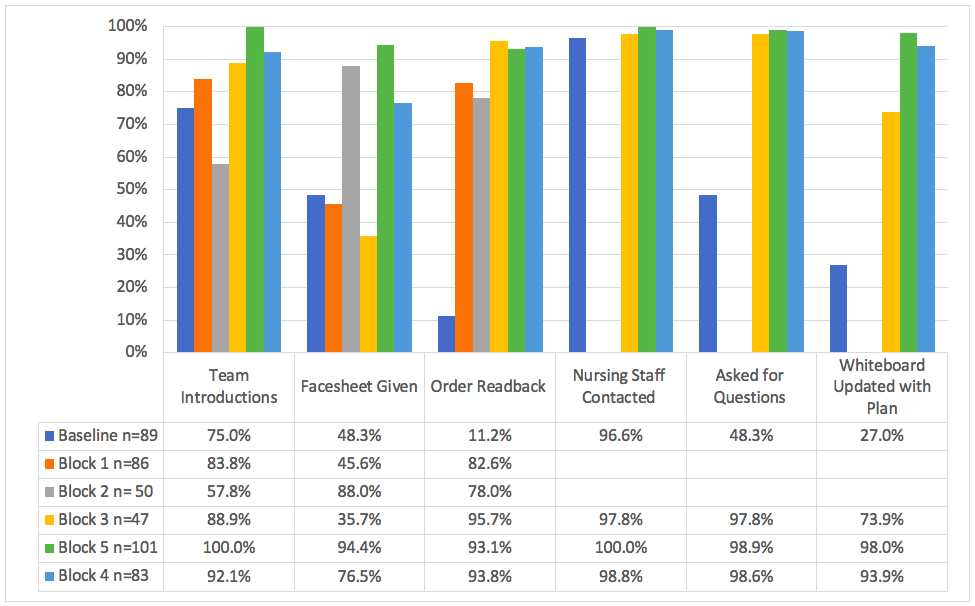Background: Family centered rounds (FCR) is an important approach in patient care that allows for multi-disciplinary collaboration and active involvement of patients and families in shared medical decision making. FCR has been recognized by the American Academy of Pediatrics (AAP) as a standard of care but the definition and implementation of FCR can be highly variable. In a previously published randomized trial, utilization of a FCR checklist demonstrated increased family engagement during FCR and improved performance of 3 of 8 checklist items. The goal of this study was to evaluate the utilization of a step-wise approach in implementing a FCR checklist in a pediatric inpatient setting.
Methods: FCR checklist made up of 13 elements was created based on an institutional standardized FCR algorithm (Image 1). Compliance to the initial FCR checklist was evaluated during rounds by a non-physician observer to understand current practices within our hospital pediatrics group. After baseline data was collected, a modified FCR checklist was narrowed to 6 items based on items identified as essential and/or as areas of improvement. The checklist was then implemented in a step-wise approach over the course of 5 resident rotation blocks:Step 1: 3 item checklist (blocks 1-2)Step 2: 6 item checklist (block 3)Step 3: bi-weekly email updates detailing resident team compliance (blocks 4-5)(items for the modified FCR checklist are highlighted in image 1) Compliance to modified checklist was evaluated by non-physician observers. Education to residents and attendings was provided via email at the beginning of each resident rotation block and during hospital pediatrics division meetings to introduce the concepts of the items on the FCR checklist.
Results: Prior to intervention, 89 baseline observations were completed. At baseline, the overall compliance rate of all 13 checklist elements was 51.8%. 367 observations were completed after initiation of the intervention. Compliance with all items on the final FCR checklist increased after all 3 steps were completed (Image 2). Overall compliance with the 3 item checklist increased from a baseline of 44.8% to 74.6% at end of Step 1 (block 2). Overall compliance with the 6 item checklist increased from a baseline of 51.1% to 97.4% by the end of Step 3 (block 5).
Conclusions: Our study showed that compliance with a FCR checklist improved by utilizing a step-wise approach: Step 1) 3 item checklist, Step 2) 7 item checklist, Step 3)bi-weekly email updates with team compliance. Further interventions should be focused on real time patient/family feedback.


